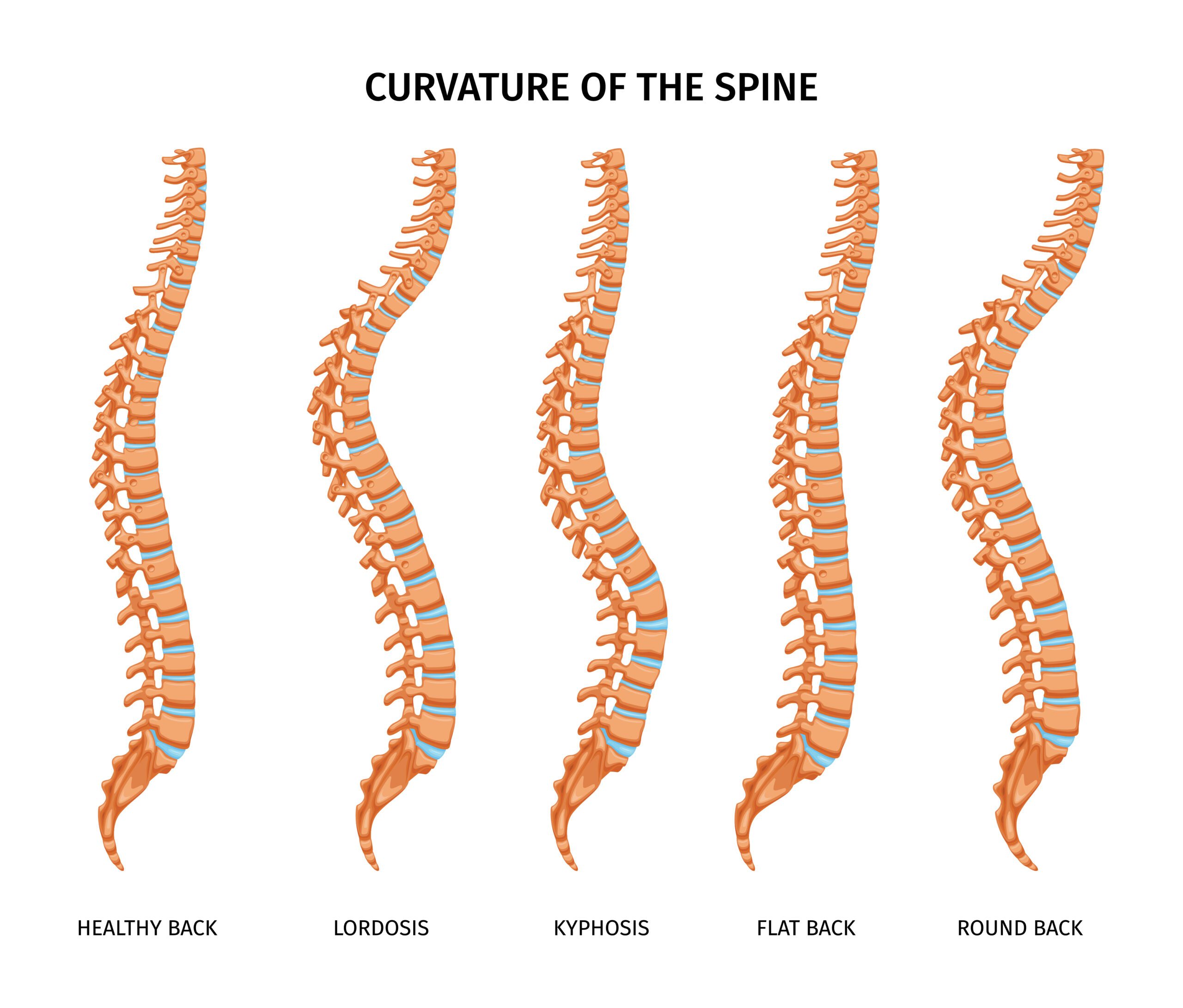What Is Kyphosis?

When seen from the side, the spine has natural curves that help the body to absorb shock with movement and carry objects more efficiently. In the thoracic spine (mid-back), there is a gentle rounding of about 20 to 40 degrees.
When the curve becomes greater than the normal range, it is called kyphosis and can give patients an extremely rounded back, or a hunchback.
There are several kinds of kyphosis:
- Postural kyphosis
- In young patients
- It is generally reversible by correcting muscular imbalances.
- In old patients
- May be part of a natural aging process
- In severe cases
- Vertebral compression fractures may be found
- In young patients
- Scheuermann’s kyphosis
- Mostly in younger children and teenagers
- The apex, or top, of the curve is usually located in the upper back and is quite rigid
- There may be pain below and around the apex that is aggravated by physical activity and by standing or sitting
- Fatigue is also common as the surrounding muscles
- Congenital kyphosis
- Can form in infants when the spinal column does not develop properly in the womb
- The spine may be malformed or fused together and can cause further progressive kyphosis as the child grows
- Surgical treatment may be necessary at a very young age and can help maintain a normal curve
- Congenital kyphosis can suddenly appear during teenage years during growth spurts
- Nutritional kyphosis
- Children who have nutritional deficiencies
- Vitamin D deficiency, which softens bones and causes curving of the spine and limbs
- Nutritional kyphosis is rare in the United States
- Children who have nutritional deficiencies
- Gibbus deformity
- Structural kyphosis
- Instead of being rounded, the curve forms a sharp, angular peak.
- Fortunately, rare in the United States
- Structural kyphosis
- Post-traumatic kyphosis
- Associated with a fall or accident
- It typically occurs in the lower mid-back or low back region
Non-surgical Treatment
There are various non-operative treatments that are available. Young patients with postural kyphosis may benefit from bracing or physical therapy to correct the muscular imbalance. Mild Scheuermann’s disease patients can be treated in a similar manner with bracing and physical therapy.
Treatment for kyphosis in the elderly or children suffering from nutritional deficiencies often involves medical management of the underlying disorder such as osteoporosis or vitamin D deficiency.
Surgical Treatment
Surgery may be indicated when one of the following occurs:
- Non-surgical treatments do not stop the curve from getting worse.
- The mid-back, or thoracic, curve worsens and becomes bigger than 75 degrees, especially in growing teenagers with Scheuermann’s kyphosis.
- Mid-back to low back, or thoracolumbar, curve worsens and becomes bigger than 60 degrees.
- There is disabling back pain or instability, such as in the case of post-traumatic kyphosis.
For the elderly patients, there are minimally invasive procedures like vertebroplasty and kyphoplasty that can help correct the deformity and relieve the pain, as open surgery is rarely indicated.
When surgery is necessary, Dr. Cho recommends a spinal fusion procedure to treat kyphosis. Dr. Cho will approached the spine from the back (posterior approach), correct the curve, and hold the spine in this new position while it fuses and heals with appropriate spinal implants (screws, rods, etc.). In rare and most severe cases, the deformity is so rigid that an osteotomy may be necessary. This is a technically challenging procedure that involves cutting through part or whole of the spine without damaging the spinal cord and nerve roots, and realigning the spine in a newly corrected position.
For more details regarding surgery, please refer to Posterior Spinal Instrumented Fusion for Kyphosis.
